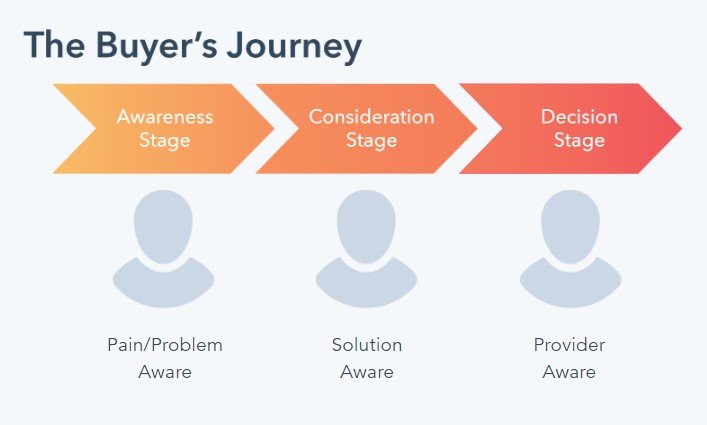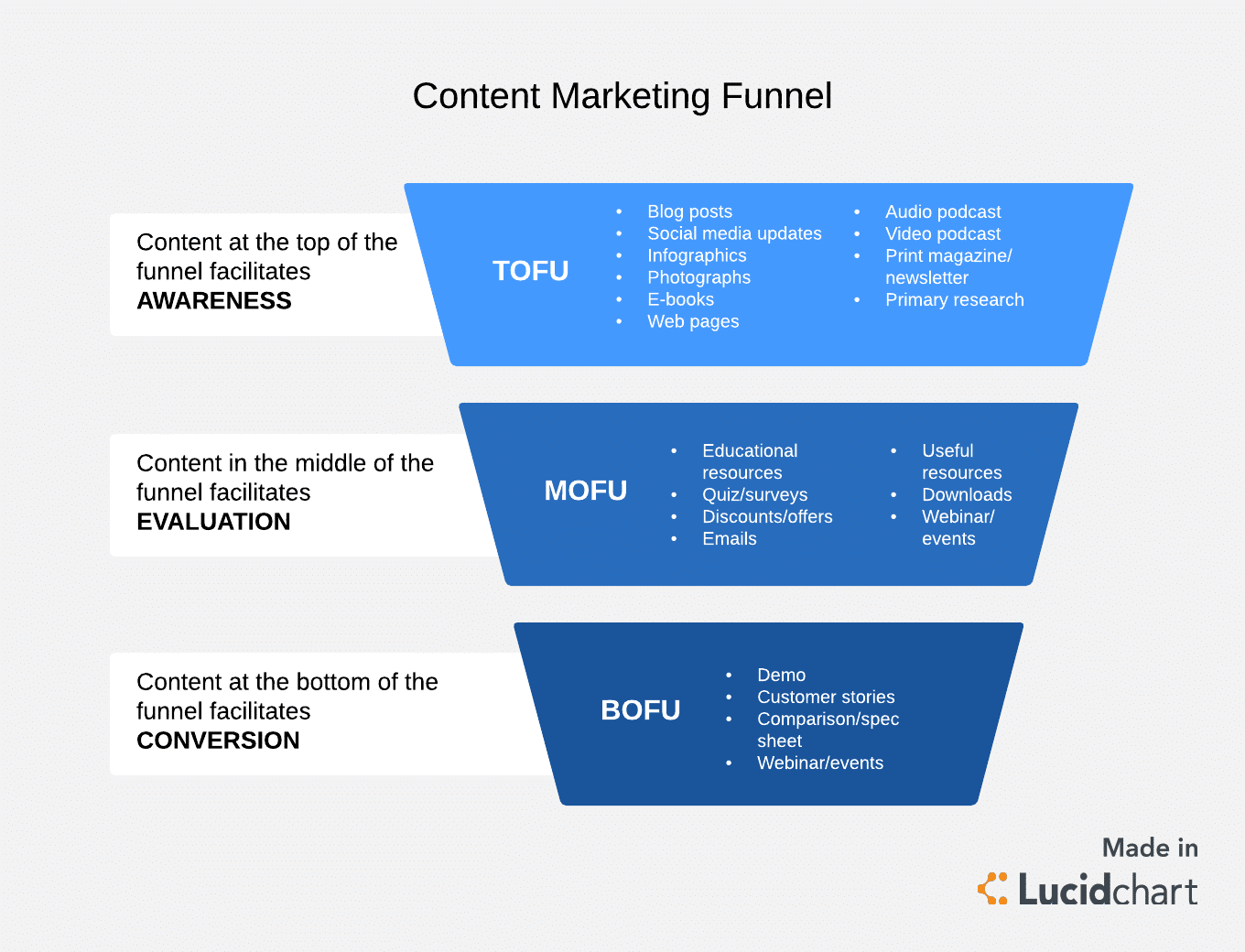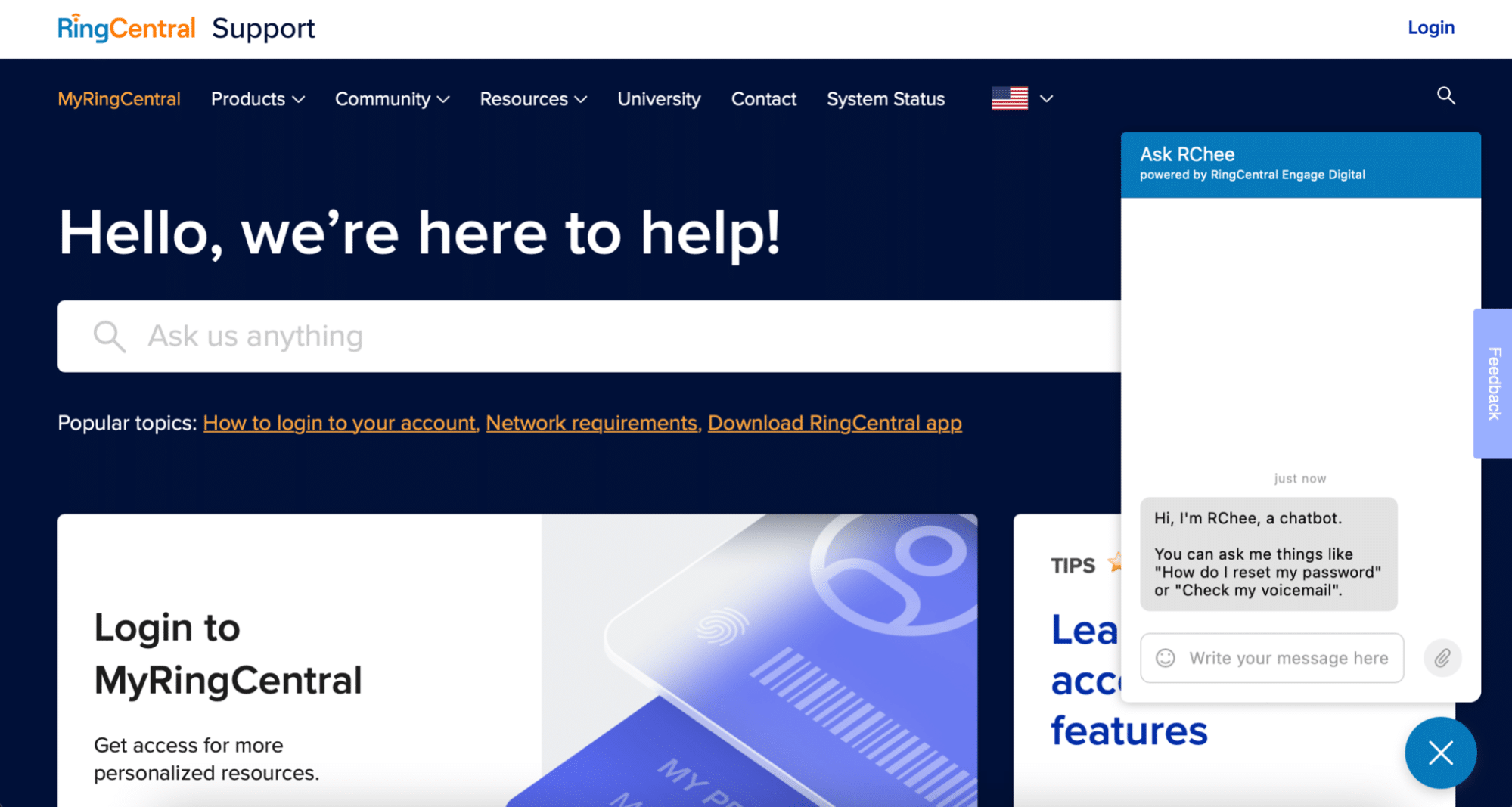We’re all familiar with the concept of a sales funnel. For most marketing teams, it’s a term that is an essential part of any strategy—knowing a person’s “next step” helps us understand and even predict what we can do to help them move one step further towards becoming a customer.
But a sales funnel shouldn’t be seen as exclusive to the sales department. Nearly every team at a company has a hand in their sales funnel. And with so many factors interacting—and in such an outward-facing way—it’s important to remember the value of each piece in the puzzle.
Communication is easily the most important element of marketing. As a result, how we speak to our audience actually is the content that shapes the sales funnel. And the only way to truly take advantage of that connection is to see how our communication can (and should!) be tailored to the different stages of the sales funnel.
Communication as a Marketing Tool
As marketers, we have certain preconceptions about “communication” as a tool. A casual tone and a touch of humour will humanise us and hopefully establish a personal connection.
It’s all too easy to think of those things as tricks to encourage engagement. Sure, that’s the goal of a marketer as well as a piece of content: To educate and entertain someone in a way that leads them to take action.

The less flattering side of that perspective is that when we start thinking about communication as a resource or strategy, we lose sight of just how powerful communication can actually be.
Communication isn’t just providing step-by-step directions that guide a customer from Point A (first touch) to Point B (purchase decision). With enough forethought, you can layer your messaging in a piece of content, providing value to the reader and also pointing to the signposts that lead them down through the sales funnel.
That’s the difference between entry-level copywriting and the sort of content that can upsell someone into buying three copies of an item they already own.
Writing’s Role in Marketing Communication
Rather than focus on the many different forms of communication, let’s focus on that one area that marketers have the most control over: Content. Or, more specifically, copywriting.
Written communication serves a few important roles, namely attracting and entertaining vs. educating and enticing. (This cleanly breaks down into a comparison between content writing and copywriting.)
This contrast also matches the pretty clear distinction between a marketing piece at the top of your funnel and the sort of content you create for people at the other stages of the sales funnel.
As someone moves along their buyer’s journey, they will gain a new understanding of your company, your products, your brand, and even your industry. They develop new expectations for their interactions with you; your job is to ensure the content meets those expectations.

Good sales funnel writing can do that with ease. And you won’t just provide someone with content that keeps them subscribed to your emails or entices them to make regular visits to your blog. You’ll answer their questions before they can even ask them, simply by shaping your writing to where they are in the sales funnel.
Communication Across a Sales Funnel
This is obviously the main topic you’re interested in. Understanding how a sales funnel works is second nature for a lot of marketers, and hopefully you’ve got a good understanding of why communication is so important for brands.
But actually seeing how those two work together makes the picture even clearer. It highlights the ways that different people expect different things from the same content. You may not be able to pack every piece with multiple layers of value, but you’ve got to start somewhere.
Sales funnel communication needs to change at every step, because customer expectations change at every step too. The goal of communication is to recognise all of those changes, but still speak in a way that encourages a response and steers the customer experience
Or, in other words, good content motivates people to take their next step down the sales funnel without needing to spam their email inbox or overrun their social media feeds.
We can break that down by looking at each stage of the sales funnel, considering what someone needs at each stage, and how marketing communication can fulfill that need.
Getting the Most From Top of Funnel Content
People in this part of the funnel aren’t even remotely interested in buying something from you right now, and that’s fine. But that lack of “serious” intent means they’re more than likely to interact with a company purely for entertainment or educational purposes.

Engaging people at the top of the funnel is perhaps the easiest spot to encourage movement down the sales funnel. (And yes, that may seem like a very obvious assessment.) It’s also when you’ll have the widest variety of interactions, from messages on Facebook to questions for your website’s chatbot.
In other words: Provide fun or interesting content and you’ll attract people to your brand. Top of funnel content is spreading brand awareness, not securing sales or even emails. Blog posts (driven by SEO keywords) and social media engagement are the most common ways, largely because the content and language has a more “entry-level” tone almost by nature.
Let’s look at an example of top of funnel content, and specifically how the language serves the purpose of this funnel segment.
I recently wrote a blog post about how to film cinematic interviews. I work for a royalty free music company, which means our ideal customers are filmmakers and content creators—the sort of people who often film interviews, either as freelancers or as marketing videographers.
The content is something that is of interest to any filmmaker, because interviews can be boring projects to work on. Using a buzzword like “cinematic” creates interest, drawing in both experienced filmmakers and people just getting into the field. And the content of the post has advice that any prospective customer with a camera could use to produce better content.
From a marketing standpoint, the goal of your top-of-funnel communication is to optimise content so it hooks prospects, builds trust, and directs them from one place to another. And that means your content should be targeting topics or platforms that potential leads are already interested in.
This is where everyday language comes into play. The communication at this stage should match the audience’s interest level, which is to say “casual.” You’re taking the first step in a relationship with top of funnel content, and any sort of sales-centred messaging (or in-depth product information) is more likely to deter a potential lead then pull them in to learn more.
Approaching Middle of Funnel Content
Content at the middle of the funnel is where communication gets more complex. The length and focus of each content piece can vary widely, and that makes it harder to ensure that people who engage with a piece will be properly guided to the next stage of their journey.
You probably know that the middle of the funnel is where you start to turn those casual prospects into engaged leads. They’re familiar with your company and your industry, but they’re not totally sure which product is the best fit for their situation or budget.
We’re all familiar with researching competitive brands and products, and we’ve all gone through good and bad marketing cycles as a result. It’s largely the communication—and the frequency of it—that will determine our experience in those scenarios.
HubSpot is a pretty stand-out example of how to deliver mid-funnel content. The company has established itself as a brand that’s synonymous with marketing, so it’s safe to assume they don’t struggle to attract new leads. But convincing people to pay top dollar for HubSpot’s service (rather than going with one of the many cheaper alternatives) isn’t as easy.
Spend any time on HubSpot and you’ll get a few popups with free content offerings. This is how they deliver mid-funnel communication: By presenting you with things like free case study templates, they can collect information about you and prove why they’re trustworthy and how you’ll benefit from their product.
Once you’ve established a good rapport with someone in the top of the funnel stage, middle of funnel communication is more about providing worth or value. And that’s a feature that HubSpot packs into every single page of their site.
In short, you’re providing clear value propositions that make it obvious why your company is the best solution to their problem. To do that, you’ve got to leverage the lead’s interest in your brand to secure their trust and—eventually—their business.
Planning Impactful Bottom of Funnel Content
Leading someone from the very top of the funnel to the bottom can be a long process, and it’s easy to lose sight of that when you think about your communication with them. But contrary to popular belief, timing isn’t everything—the information you provide has just as much weight as how often you provide it.
The good news is that purchase intent is almost a given at this point. If nothing else, the potential customer is at least aware of the problem that your product would help with. And that means they’ve successfully transitioned to being a full-on lead.
Just because they’re out of the top or the middle stages doesn’t mean they won’t still see and engage with that content, however. Lifelong customers can still read blogs, receive newsletters, or follow social channels. The same is true for leads who haven’t made a purchase decision yet.
And so your communication continues to get deeper, even while you’re still providing value propositions and case studies and even tutorials or best practices for using your product.
The good news is that the bottom of the funnel is where you can get a little nerdy about your products/services. This particular infographic provides a textbook-worth of numbers. In fact, it is almost overwhelming without any content.
But for people who download this as a PDF or open it from a blogpost, the content here is just the sort of stuff leads want to know before they choose who to purchase from.
Is it interesting to someone unfamiliar with your brand? Absolutely not. But content like this dumps a metric ton of value onto the plate of any lead. You make it clear that you know your stuff; meanwhile, the lead walks away thinking you’re exactly the kind of expert they can trust with their business.
And no matter how you engage with them, your messaging should continue to reaffirm all the trust and confidence you’ve built up from the start of their buyer’s journey. After all, they already understand your business and industry—they might just be waiting for a good sale, or their next paycheck, or some other life event that pushes them across the finish line.
Writing For the Medium You’re Using
Communication will vary based on where the content lives, since a Facebook audience will carry different expectations than, say, a blog post or landing page reader. And you wouldn’t load up an ad with the same word count as you would put into a sales email.
The same goes for how you use SEO across different channels, how you share content, and even whether or not the verbiage in your marketing lines up with the voice in your product.

That’s because good marketers don’t just know their audience, they understand the platform, and how their audience engages with it. You’ll have an easier time communicating with people where they spend time and in a format they enjoy, instead of trying to derail their experience with something outside the norm.
Digital age consumers are marketing savvy, and they expect a seamless experience that caters to them. And if you aren’t speaking to them how they want to be spoken to, you’re just wasting your time and theirs.
Personalisation in an Age of Automation
Things get a little complicated when you introduce automation. Sure, email automation and even support chatbots streamline processes and save hours of work. But that convenience does still come with trade-offs that may affect how people perceive your communication.
The biggest loss here is personalisation. Or, rather, the feel of getting tailored content. That isn’t to say it’s an impossible feat, just a difficult one. After all, customers put a lot of value on (and even expect) personalised experiences.
However, it’s unrealistic to customise or personalise every single interaction with each person who interacts with your brand. You can’t write 10 versions of every blog post and 20 versions of every email. And you certainly can’t change the background music in every ad or social media video to match the personal tastes of every viewer.
So, how do you maintain control of your communication while also using chatbots and automated emails?
It’ll require you to put additional effort into messaging to try and keep the “wow this company really understands me” experience that people expect from their favourite brands. You’ll also miss out on the positive association that customers place upon a helpful chat experience (And yes, it helps to know why chatbots are so important.)

A good marketer can write a sequence of automated emails without sounding like a KPI-driven robot. And a chatbot can come across as personable while handling FAQs and directing people to the proper channels or pages.
Just remember that how you implement these support tools shouldn’t affect how you engage with your audience. Human connections carry a lot of weight with leads, and an overreliance on automation has the potential of jeopardising your ability to make those connections.
Automation can help simplify some parts of the process, but it’ll never replace the personal connection that is one of the building blocks of any successful marketing strategy.
A Foolproof Approach to Communication
Our current understanding of “digital marketing” is always evolving. That’s because the heavy-handed sales copy of yesteryear doesn’t work anymore. Consumers can sniff out an email with variable fields in seconds. Abrasive data collection popups lead to immediate rejection.
In reality, communication comes down to a simple concept: Empathy. Good communicators think about the audience first and their own goals second. They speak to the audience rather than spouting off ad copy at them. More importantly, they look for opportunities to help and support the audience, whether they convert or not.
All of that builds trust, and trust is the foundation of any relationship. If you want to guide a prospect all the way through your sales funnel, you’ve got to stop approaching them like a stranger and focus on communicating with them like you would a friend or even a relative.
And yes, communication is an integral part of that process.
Originally published Oct 20, 2021, updated Jan 17, 2023
